art and archaeology midterm
1/189
There's no tags or description
Looks like no tags are added yet.
Name | Mastery | Learn | Test | Matching | Spaced |
|---|
No study sessions yet.
190 Terms
Helladic
mainland Greece
Cycladic
cyclical-shape of islands in the Mediterranean Sea
Anatolian
eastern coastal area
Hesiod
wrote "Ages of Men"
Golden Age
men made of gold and lived long lives, eternally spring (no work or sorrow), period of great cultural achievement
Silver Age
men made of silver by Zeus, long lives fraught with conflict (seasons created, making work necessary, hunger and cold, shelters needed, men courageous but overbearing), not quite as nice as the Golden Age
Bronze Age
men made of bronze from ash tree (the wood use to make spears), all men are vicious and warlike, men die unnamed and become shadows
Age of Heroes
made by Zeus (half-gods), men are warlike and die, go to the "Isles of the Blessed" upon death
Iron Age
all men are dishonest, life is nasty, brutish, and short
Homer
ancient Greek epic poet who is believed to have written the Iliad and the Odyssey (circa 850 BC)
Heinrich Schliemann
German archaeologist who discovered nine superimposed city sites of Troy (and Mycenae) — excavated straight down to the bottom site and destroyed scores of artifacts in the process
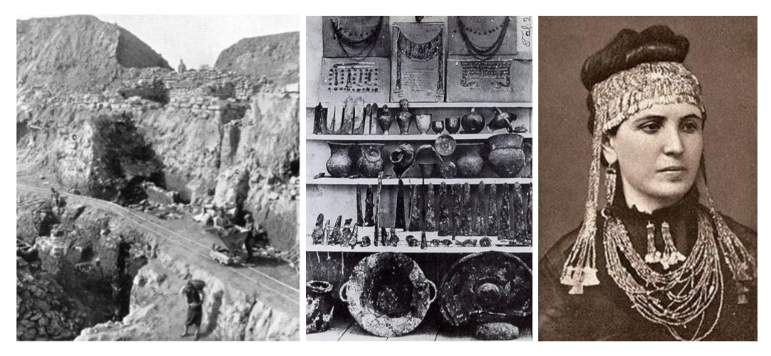
Hisarlik
modern-day city in Turkey where the ancient city of Troy is believed to have been located
Arthur Evans
British archaeologist who excavated the palace of Knossos in Crete to find what he called the "Minoan Palace"
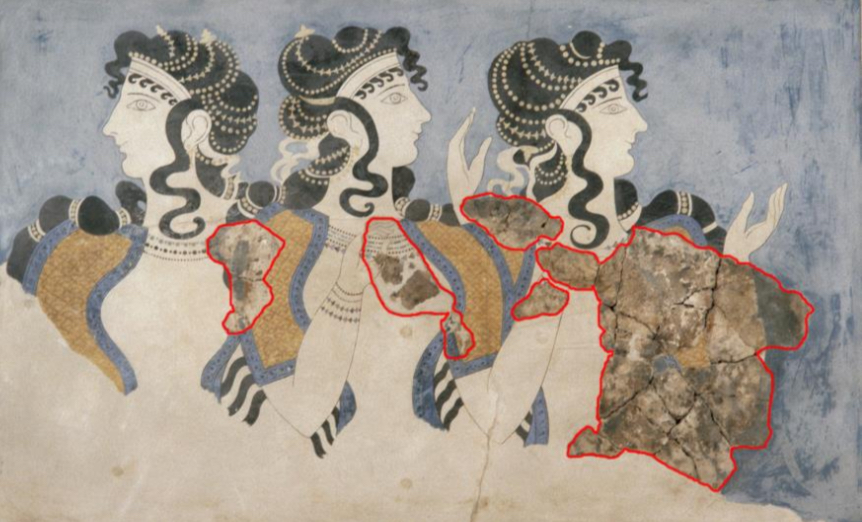
tools of modern archaeology
from macro data to micro data: landscape & environment, regional settlement patterns, individual sites, architecture, burial types, pottery, small finds, faunal remains, botanical evidence, chemical & organic signatures
"peaceful, nature-loving Minoans"
how Arthur Evans described the Minoan people — he reconstructed most of the evidence he found to fit his own narratives
settlement hierarchy
mobile hunter-gatherer groups, segmentary society, chiefdom, state
settlement pattern
the spatial distribution of human habitation and related structures across a landscape
stratigraphy
the study of rock layers and the sequence of events they reflect
settlement nucleation
the process by which human populations concentrate in a central location rather than being dispersed across a landscape — results in larger, more densely clustered settlements
central place theory
developed by German geographer Walter Chistaller in the 1930s: argues that in a uniformly topographical landscape, the spatial patterning of settlements would be perfectly regular — central places or settlements of the same size and nature would be equidistant from each other, surrounded by their own secondary centers. under these conditions, the territories "controlled" by each center would be hexagonal in shape.
faunal analysis
identification and interpretation of animal remains from an archaeological site — the species present at the time tell us about the diets of the people living there and the agricultural environment there
botanical analysis
identification and interpretation of plant remains from an archaeological site — the crops found from that time tell us about the diets of the people living there, the spatial distribution of their harvests, trade, etc.
secondary product
a product manufactured from raw materials (primary products) through extra labor and time / value-added
what clues does Neolithic and Early Bronze settlement patterns give us about changes in land use, economy, and social complexity?
bigger populations → increased social complexity & division of labor
better irrigation & agriculture → more surplus, trade, and hierarchies
more coastal cities & sea trade → economic expansion & cultural exchange
greater settlement nucleation → political centralization & defense
mobile hunter-gatherer groups
small-scale, egalitarian societies that rely on hunting, gathering, and fishing, without permanent settlements or complex social hierarchies (moving seasonally)
segmentary society
slightly larger, more community based societies that rely on agriculture and domesticated animals for subsistence, living in permanent villages (with burial mounds and shrines) who are organized into kin-based segments or tribes
chiefdom
larger and more complex, kinship-based societies with a ranked social hierarchy, ruled by a hereditary leader who holds both political and religious authority, with clear distinctions in social status and power
state
very large, highly centralized, complex society with a formalized government, class-based social hierarchy, and institutionalized economic and religious systems — characterized by bureaucratic administration, territorial control, and military forces to enforce authority
PASTA
pottery, architecture, small finds, tombs, artifacts — key archaeological evidence
PASTA of Eutresis Culture (features of EH I — 3100-2650 BC)
pottery: red burnished ware, Talioti fruit stand
architecture: coastal settlements, shift from high mountains to foothills & lowlands
small finds: metal (rare) — bronze
red burnished ware
typically featured a reddish hue, being burnished (polished) made it look nicer and sealed it better — Eutresis
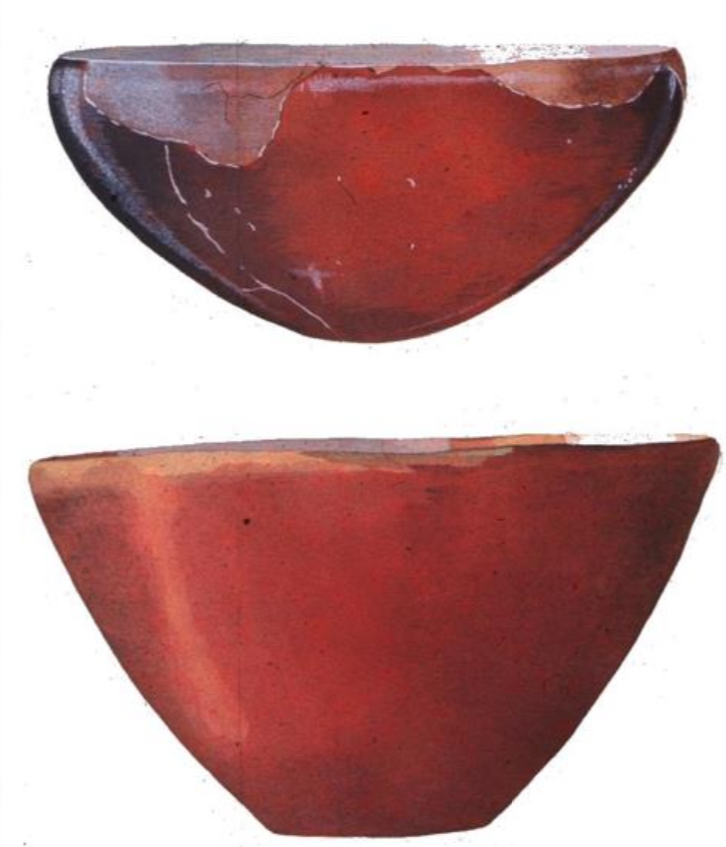
Talioti fruit stand
named for where they were found (Talioti) and because they most closely resemble fruit stands — Eutresis
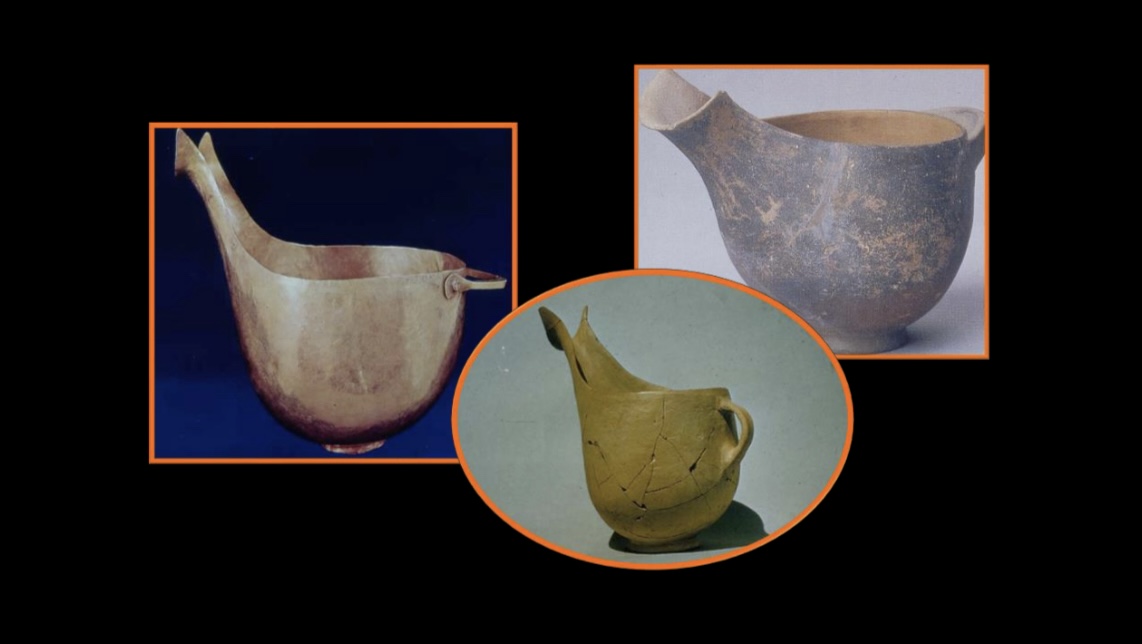
PASTA of Korakou Culture (features of EH II — 2650-2150 BC)
pottery: urfinis ware, yellow mottled ware, sauceboat
architecture: settlements were more coastal and more upwards (to be able to observe ships coming from far away), greater fortification (via redistribution), corridor houses, House of Tiles
tombs: underground pits, rock-lined cist tomb chambers, with a dromos (entryway), multiple burials (being reused)
skeuomorph
an object that imitates the design of a similar artifact made from different materials, often preserving the original's aesthetic aspects while using modern/local techniques or materials
urfinis ware
plain, unburnished saucer — Korakou
yellow mottled ware
light slip (doubled as glue and paint) and lightly burnished — Korakou
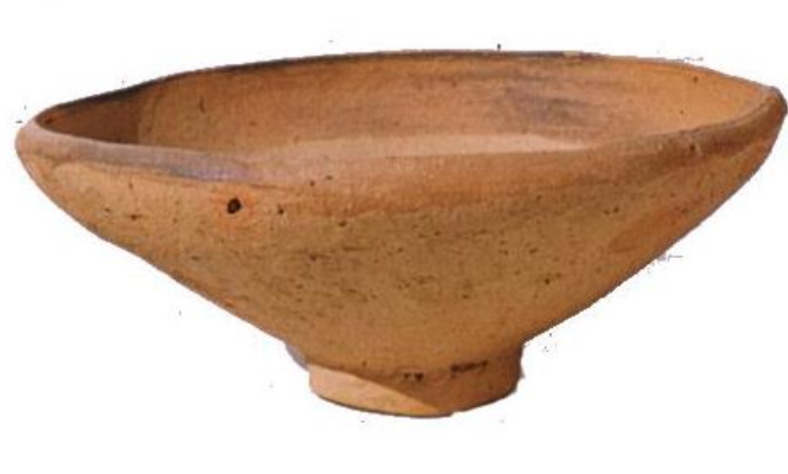
sauceboat
knockoff of typical metallic eastern Mediterranean drinking vessel — Korakou
corridor houses
large square/rectangular rooms with corridors and stairways, foundation built out of stone with mud walls, fairly uniform architecture — Korakou
House of Tiles at Lerna level III
part of Korakou culture, very elaborately decorated with red-painted walls and sealed clay hearths, two story building, heavily fortified with a double ring of defensive walls, seal impressions were found on jars/boxes

redistribution
the process of transferring income and wealth from some individuals and groups to others, typically through taxation (i.e. greater fortification during Korakou era tells us that economically the society had surplus of some material goods that allowed them to finance this)
cist tombs
rock-lined chambers for burials
Manika cemetery
settlement and cemetery located in Manika, Euboea (EH II) — contained cist chamber tombs, various grave goods (including imported vessels), and bodies were thought to have been wrapped in cloth
competitive gift-giving
a practice meant to establish and maintain relationships, demonstrate status, and even resolve disputes
PASTA of Lefkandi/Kastri Culture (features of late EH II — 2450-2150 BC)
Kastri (Cyclades) influenced culture in Lefkandi (mainland)
pottery (strong Anatolian influence): Tankard, Depas amphikypellon, beaked jug, burnished bass bowl
architecture: apsidal houses
small finds: tin (from Anatolia)
tombs: cist-tomb burials (like the Cyclades)
*strong Anatolian influence suggests immigration of Anatolian peoples to this region
apsidal houses
origins in western Turkey, shows up for the first time on the mainland in Lefkandi/Kastri (continues into EH III)

island archaeology
the study of island communities, cultures, and environments, examining the effects of insularity on human societies and their interactions with the sea and other islands
island archaeology in the Cyclades
• islands: lack of arable land for enough food and water / populations are small making it hard to reproduce — causes islands to communicate
• valuable resources: Melian obsidian [from Melos] & Kean metals (lead, silver, copper, etc.) [from Keos]
• water: did not divide, but connected (Mediterranean is like a “highway“ for trade and Cyclades were like “stepping stones“)
teleological frameworks
an approach that views human history and cultural development as progressing towards a predetermined end or goal
Peperaki’s interpretation of the sealing evidence at the House of Tiles
• believed “sealed“ products were prestigious and rare
• smaller products in boxes
• thought outsiders were the ones sealing the products → feasts and gifts
seals: applied outside of Lerna by local centers or individuals
types of goods: small goods
purpose: gathering
Renfrew’s interpretation of the sealing evidence at the House of Tiles
• redistribution!
• mainly thinks bulk commodities are the products being “sealed“ → store jars and sacks (no evidence for either)
seals: applied on-site by House of Tiles owner
types of goods: bulk commodities, surplus of goods
purpose: redistribution of goods to the hinterlands
how do Peperaki’s and Renfrew’s ideas about the sealing evidence at the House of Tiles compare?
*both agree that we are progressing towards complex society
*both agree that the House of Tiles probably housed some sort of ruler / chief / central authority
**disagree about where on the scale of social complexity Lerna falls (Renfrew believed Lerna was much more developed than Peperaki did?)
**disagree about where the next step in the progression of society needs to be
how are islands different from larger landmasses when it comes to settlement strategies?
• greater lack of resources (arable land, freshwater, materials)
• need to travel more over water vs land during initial settlement period — dependent also on proximity to other islands, availability of harbors, and sea routes
• smaller, more dispersed communities
• balance between connectivity and isolation due to sea
PASTA of Grotta-Pelos Culture (features of EC I — 3100-2800 BC)
pottery: kandiles
architecture: rectangular houses
small finds: tombs: cist tombs — demarcated, offerings inside and outside of graves, mix of single / multiple burials per tombs
artifacts: grave offerings (marbila “kandila“, cylindrical “pyxis“, collared jars, frying pans, incised dark burnished ware, early forms of FAFs [violin, plastiras])
![<p>pottery: kandiles</p><p>architecture: rectangular houses</p><p>small finds: tombs: cist tombs — demarcated, offerings inside and outside of graves, mix of single / multiple burials per tombs</p><p>artifacts: grave offerings (marbila “kandila“, cylindrical “pyxis“, collared jars, frying pans, incised dark burnished ware, early forms of FAFs [violin, plastiras])</p>](https://knowt-user-attachments.s3.amazonaws.com/7ed7908b-910c-45e7-be63-c1caa5b80c1b.jpg)
kandiles
marble vessels (characterized by a globular body, collared neck, and tall cylindrical foot) — Grotta-Pelos
Ayio Anargyroi cemetery
?
PASTA of Keros-Syros Culture (features of EC II — 2800-2300 BC)
pottery: sauceboat, beaked jugs, pyxides, bowls, frying pans (many were covered with elaborate decorations & meant to imitate metals) [Chalandriani-Kastri], farissa (fineware) [Daskaleio-Kavos]
architecture: rectangular houses, one apsidal house (added later) [Skarkos]
small finds: marble [Skarkos]
tombs: 2-storied cist tombs (with door) + corbelled graves (note entrances) / many tombs had doors despite being used for individual burials [Chalandriani]
artifacts: emergence of FAFs and metal weapons found in graves [Chalandriani], hundreds of FAFs and tens of thousands of fragments of farissa found in sanctuary deposit — fragments were clearly broken elsewhere and then brought here [Daskaleio-Kavos]
**major sites: Skarkos (Ios), Chalandriani-Kastri, Daskaleio-Kavos
![<p>pottery: sauceboat, beaked jugs, pyxides, bowls, frying pans (many were covered with elaborate decorations & meant to imitate metals) [Chalandriani-Kastri], farissa (fineware) [Daskaleio-Kavos]</p><p>architecture: rectangular houses, one apsidal house (added later) [Skarkos]</p><p>small finds: marble [Skarkos]</p><p>tombs: 2-storied cist tombs (with door) + corbelled graves (note entrances) / many tombs had doors despite being used for individual burials [Chalandriani]</p><p>artifacts: emergence of FAFs and metal weapons found in graves [Chalandriani], hundreds of FAFs and tens of thousands of fragments of farissa found in sanctuary deposit — fragments were clearly broken elsewhere and then brought here [Daskaleio-Kavos]</p><p>**major sites: Skarkos (Ios), Chalandriani-Kastri, Daskaleio-Kavos</p>](https://knowt-user-attachments.s3.amazonaws.com/695bdafd-98b1-454a-ae1e-e30a978ae09a.jpg)
Skarkos
major site of the Keros-Syros culture — located on the west side of the island Ios, the most well-preserved site of this time
Chalandriani-Kastri
major site of the Keros-Syros culture — named after Chalandriani (a cemetery from Keros-Syros) & Kastri (part of the Lefkandi-Kastri group),
Daskaleio-Kavos
major site of the Keros-Syros culture
folded arm figurines (FAFs)
marble structures typical of Cycladic culture meant to depict humans (mostly women) with their arms folded across their bodies, often found in graves
• painted ladies (from Crete) — originally thought to have been purely white stone / marble, but under infrared you can see the creative painting
• Dokathismata and Keros-Syros types show greater ambiguity of gender
• lines across the stomach were considered representative of fertility
male FAF types
?
tin-bronze
Anatolian people brought tin to Lefkandi-Kastri — Kastri bronzes have the same Pb isotope signatures and alloy ratios as those from Troy
what are the general features one can note in the development of FAFs?
FAFs shifted from being flatter, “violin“ shaped figures, to having an increasing amount of detail — the figures became more 3D, wider hips, more defined breasts, more defined noses, addition of toes and fingers
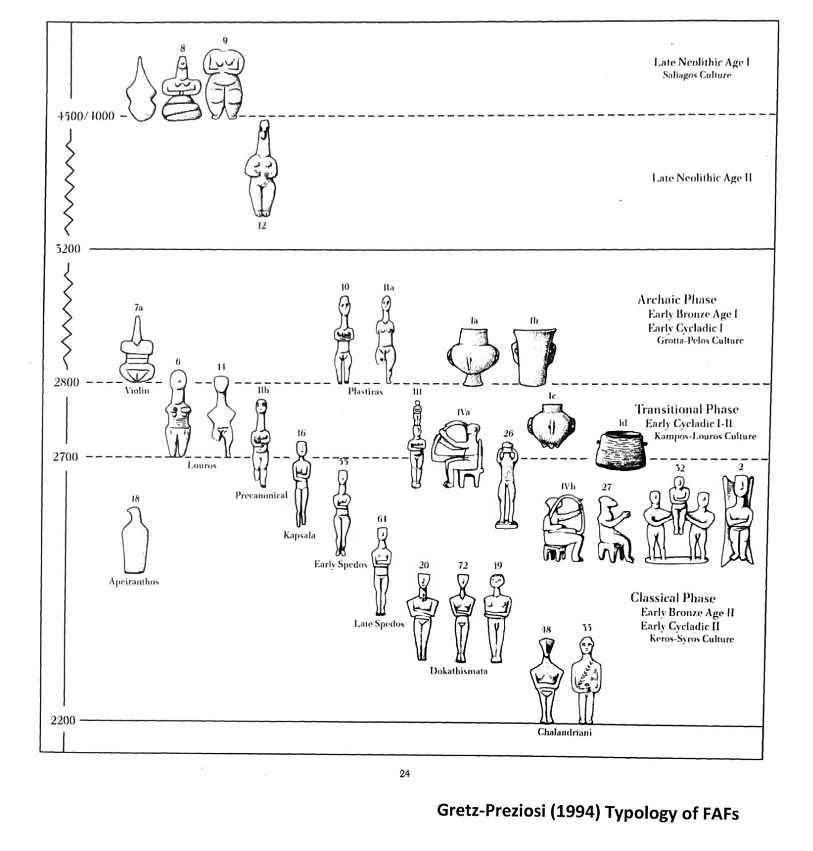
explain and evaluate Hoffman’s theory about painted ladies
from Hoffman reading
how does the development of society in the EH II mainland differ from society in the EC II Cyclades?
Cyclades: Chalandriani-Kastri
• pottery with Anatolian ties
• bronze with Anatolian origins
• limited fortifications
Mainland: Lefkandi-Kastri
• pottery with Anatolian ties
• bronze with Anatolian origins
• heavy fortifications
• cist tomb cemeteries
• rectangular / apsidal houses
features of Early Minoan (Crete) I-II
• “ahead of pace” — mass consuming
• cultural connections: North / Northeast coast → Cyclades, South coast → Egypt, Northwest → mainland, East → Anatolia
• “boundaries“ between different regions were mostly natural — mountains
burial types of EM I-II Crete
Northwest / North: cave burials
East: cist tombs
Northeast: cist tombs with antechambers / house tombs
South: tholos tombs
PASTA of EM I Culture
pottery: “PDK” — pyrgos ware, dark-on-light painted, Kampos
tombs: regionally different
artifacts: trading evidence — Cycladic pottery, amphora, early metals, obsidian
**major sites: Knossos, Poros-Katsambas, Ayia Photia. cemetery
Knossos
major site of the EM I and II culture — inland, has a harbor, connected to Poros-Katsambas by the Kairatos River, 100% Minoan style pottery (EM I), “well deposits” (changes between EM I and II), 0% Cycladic transport jars (EM II)
Poros-Katsambas
major site of the EM I & II culture — connected to Knossos by the Kairatos River, 33% Cycladic style pottery / full domestic assemblage (EM I), 80% Cycladic transport jars (EM II)
Ayia Photia cemetry
Cycladic style cist tombs + pottery, small antechambers
pyrgos ware
fine china (drinking and serving), gray & pattern burnishing — EM I
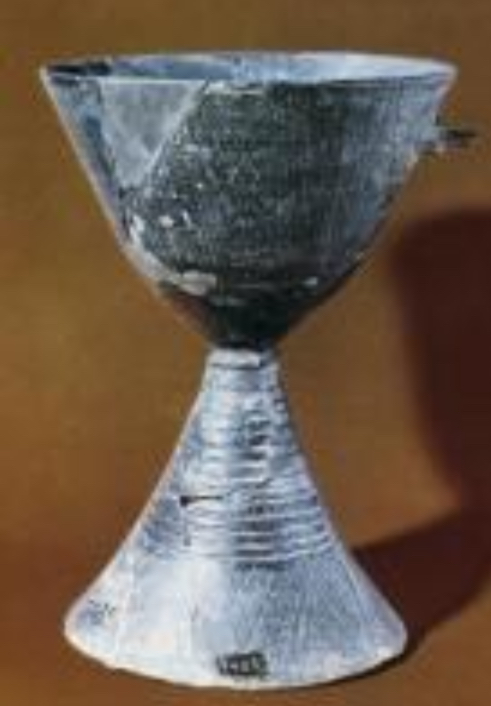
dark-on-light painted ware
standard everyday ware, darker
paint used over top lighter background, also referred to as Ayios Ounouphrios ware — EM I

Kampos ware
only in northern Crete and in the southern Cyclades, black burnished and incised, only Cycladic shapes (bottles, etc.) — EM I (disappears in EM II)
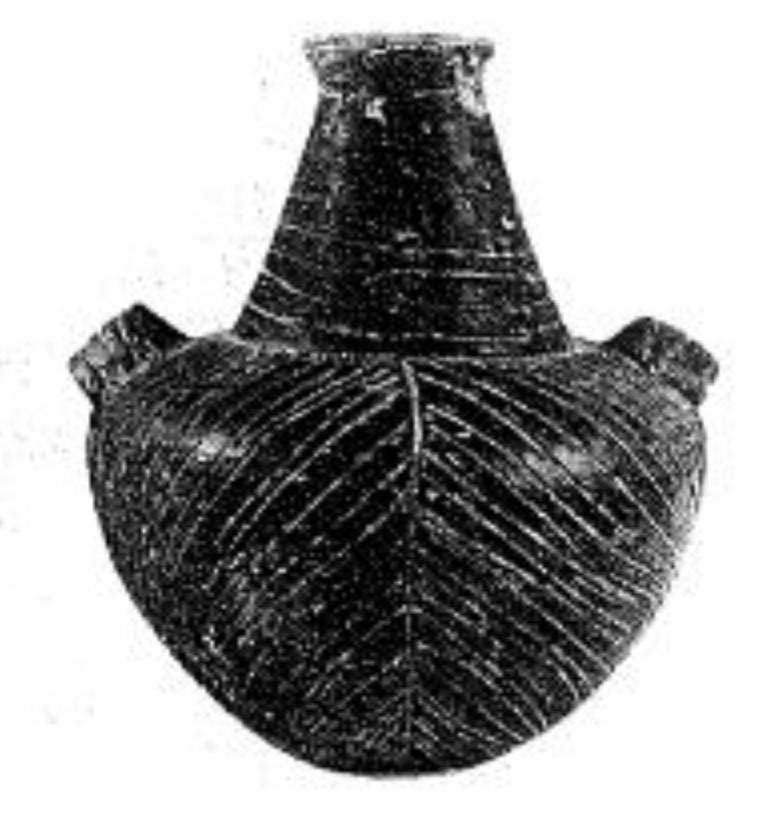
PASTA of EM II culture
pottery: Vasiliki ware, monochrome ware
architecture: depends on the site
small finds:
tombs: house tombs, Mochlos
artifacts:
**major sites: Knossos, Poros-Katsambas, Vasiliki, Myrtos—Phornou-Koriphi
Knossos well deposits (EM I vs EM II)
EM I: highly decorated vessels, consistent deposition of serving/drinking vessels, communal → large
EM II: smaller + more intricate, more individuals
Vasiliki ware
fine china (drinking and serving), teapots (evolution of Pyrgos ware from EM I) — EM II

monochrome ware
standard everyday ware, egg cups (evolution of dark-on-light painted ware from EM I) — EM II B
Vasiliki (settlement)
West House & Red House, multiple stories, buildings are connected, “orthogonal” grid-like orientation, robust village, access to North-South trade route, North-South orientation
Myrtos—Phornou-Koriphi (settlement)
light on the South coast, houses are placed on the hills above with a good view of the sea, North-South orientation, slightly disorganized village (different types of houses), different “"socialized regions” (loomweights, larger vessels pottery pantry, small vessels pottery pantry, ashes and cooking pots, storejars along a wall, ladder + charcoal fragments) within houses but also within village as a whole, NOT a large redistribution economy
Mochlos
west slope: stone construction
south slope: 1-3 compartments, mudbrick, no pretty stones — many tombs were found to have very ncie adornments and offerings (such as gold, diadems, etc.)
“buried” wealth
people in Crete wanted to somewhat emulate the elite lives of people from other regions (mostly Eastern) by importing these luxury items from these places and then put them in tombs just to show that they could afford these thngs
tholos tombs
more rounded, in close proximity with the communities they are associated with, corbelled roofs1, “trilithon” doorway (always positioned on Eastern side so you can face West)2 — consistent with those found in Egypt
evolution of house tombs
more compartments + rooms being added on (more complex)
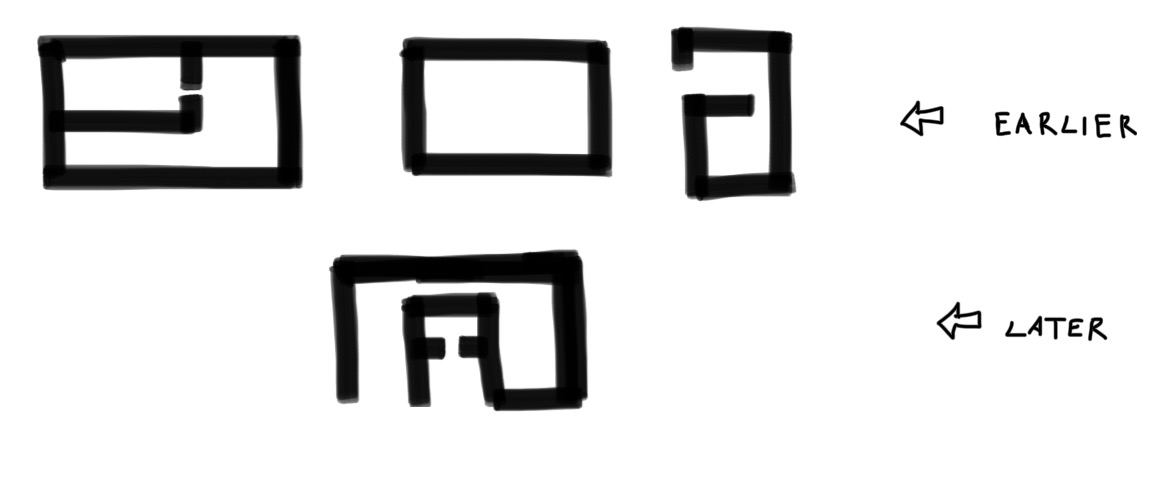
Mesara Plain secondary burial
?
ancestor cult
?
Early Bronze II system failure
disruption — some damage and destruction leads to rebuilding
PASTA of Tiryns Culture (features of EH III)
?
secondary products economy
?
how does the comparison between EM Poros-Katsambas and Knossos help us to understand social and economic processes in the early Minoan period?
Poros-Katsambas interacted much more with the Cyclades for economic and social purposes, whereas Knossos did not
what evidence for burial ritual does Branigan present? how do the tholoi rituals compare with the house tomb rituals?
?
explain the use of the house tombs at Mochlos. How does Colburn see these connecting to social development in the EM II?
?
Phourni-Archanes
EM III - LM cemetery complex — pithos and larnax burials (continue alongside earlier burial traditions, greater individualization, “pillar crypt”)
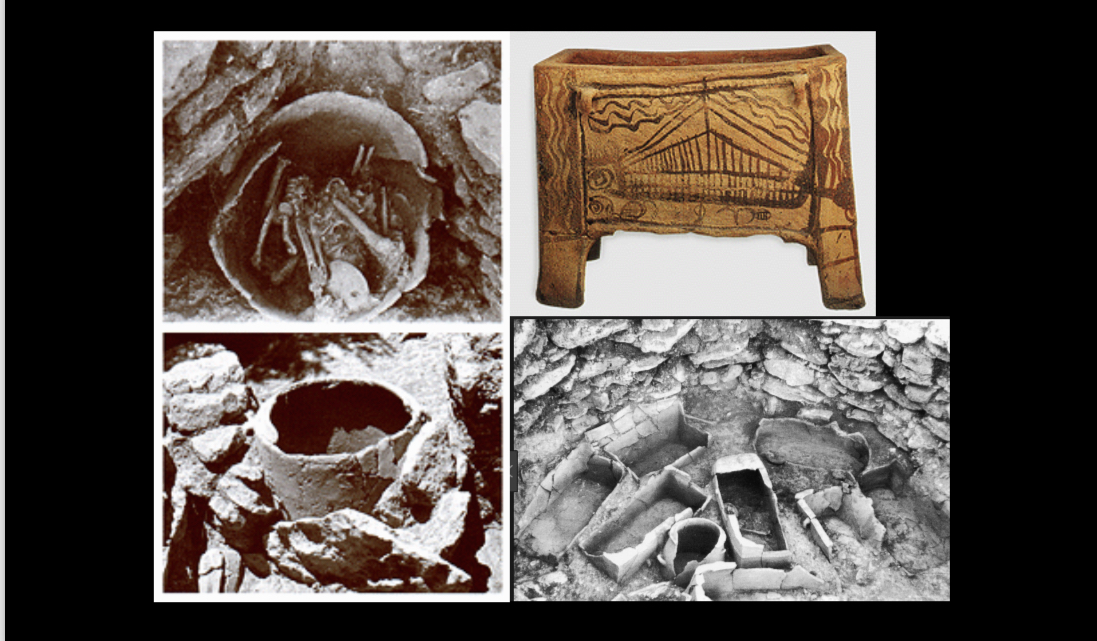
pillar crypt
architectural connection between living and dead
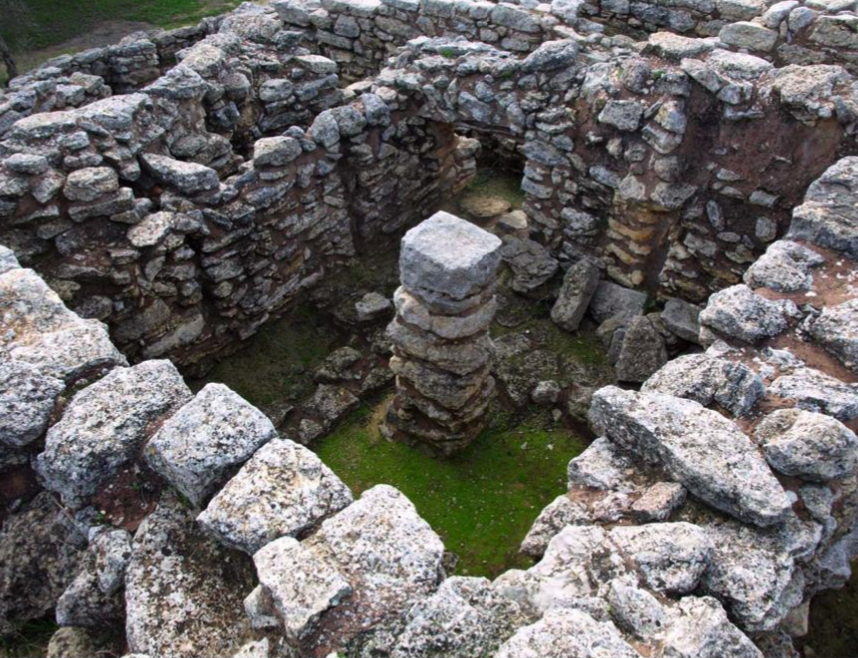
protopalatial features
theaters, causeways, magazines, koloures, west and central courts
neopalatial features
theaters, causeways, west & central courts, magazines, lustral basins (often placed near throne room), throne room, pillar crypt, Minoan Hall
west and central courts
royal viewing (W), gathering grain / taxation ? (W), space for performance and communal gathering (W, C), arena for athletic events (C), space for religious ritual
throne room
often connected with interactions of specific deities
Minoan Hall
light well, forecourt with colums, hall with polythyra (pier-and-door-partitions), at Knossos “Hall of the Double Axes”
pier-and-door partitions
also referred to as polythyra, I (with lines over top and bottom) shaped blocks that helped doors open and close